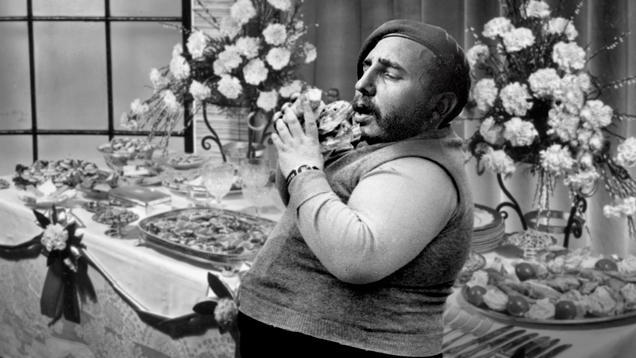The United States is beginning to normalise relations with Cuba. Which is kind of amazing, when you consider the fact that America has been trying to sabotage the island nation for over half a century. In fact, the US government has officially produced dozens of ideas for destabilising Cuba. And many of them sound like conspiracy theory fan-fiction. Yet they’re all real.
Picture: Sam Woolley
When you look through the lists of declassified ideas from the early 1960s it can be a bit shocking. They were conceived under the umbrella of initiatives like The Cuba Project, Operation Mongoose, and Operation Northwoods, all with the rather straightforward goal of ousting Fidel Castro. Some of the plans literally involve false flag operations — covert missions to disrupt Cuba and instigate war, but hiding the fact that they were executed by the United States.
One of the more innocuous ideas involved distributing fake photos of an obese Fidel Castro living in the lap of luxury. Other ideas involved air-dropping one-way aeroplane tickets that would let Cubans fly to nearby cities. But some of the most bizarre plans called for staging fake attacks on Americans that would be used as a pretence for invading Cuba.
Below we have just a few of the ideas concocted by American intelligence and military planners. These aren’t crazy half-baked conspiracy theories that were floated by the tinfoil hat crowd. They’re real plans from the 1960s that are currently sitting in the US National Archives.
Stage a Cuban attack on an American aeroplane
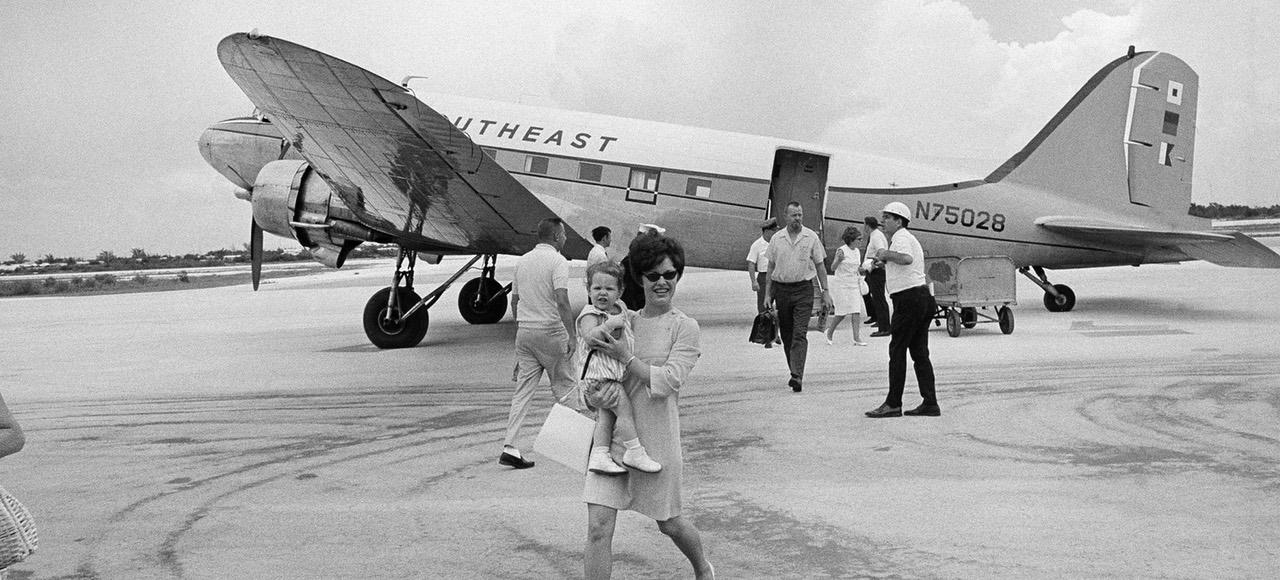
Plane lands in Florida after being hijacked and taken to Cuba in 1968 via AP
Perhaps the most shocking plans to disrupt Cuba came from a top secret memo by Brigadier General William H. Craig dated March 13, 1962. The document was titled “Justification for US Military Intervention in Cuba,” which pretty much explains itself.
Craig detailed plans to blow up empty American warships, stage riots at the gates of Guantanamo Bay, and conduct fake funerals for American soldiers. One of Craig’s plans even involved blowing up a CIA drone made to look like a civilian plane that was carrying American college students.
“An aircraft at Eglin [Air Force Base] would be painted and numbered as an exact duplicate for a civil registered aircraft belonging to a CIA proprietary organisation in the Miami area,” the 1962 plan says. “At a designated time the duplicate would be substituted for the actual civil aircraft and would be loaded with the selected passengers, all boarded under carefully prepared aliases. The actual registered aircraft would be converted to a drone.”
The document goes on to explain how the CIA drone would issue a distress call, explaining that it was under attack by Cuban fighters. The drone would then be blown up by remote control in the middle of its distress radio transmission. “This will allow ICAO radio stations in the Western Hemisphere to tell the US what has happened to the aircraft instead of the US trying to ‘sell’ the incident,” the document explained.
Make Castro look fat and happy with doctored photos
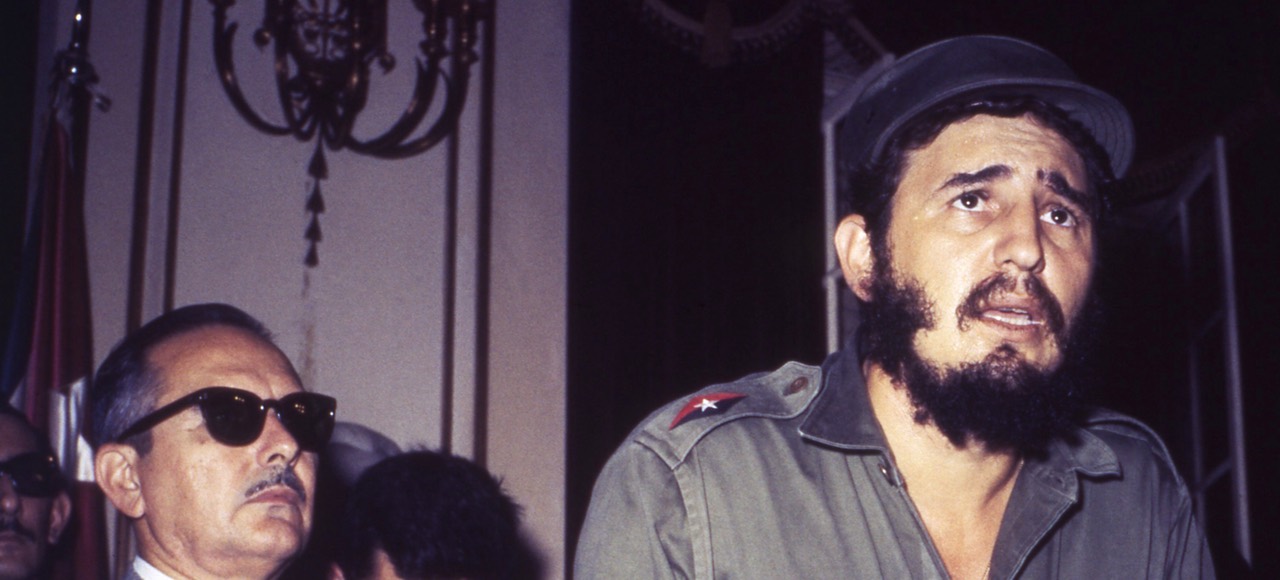
Fidel Castro in 1959 via AP
The goal of Operation Good Times was to create fake photographs of Fidel Castro living lavishly. The hope was to stir dissent and aid in some kind of homegrown uprising.
“Prepare a desired photograph, such as an obese Castro with two beauties in any situation desire, ostensibly within a room in the Castro residence, lavishly furnished, and a table brimming over with the most delectable Cuban food,” the planning document reads.
The photo would be accompanied with a caption such as “My ration is different,” to give the impression that Castro was living the good life, while his people suffered.
Drop one-way plane tickets on Cuba
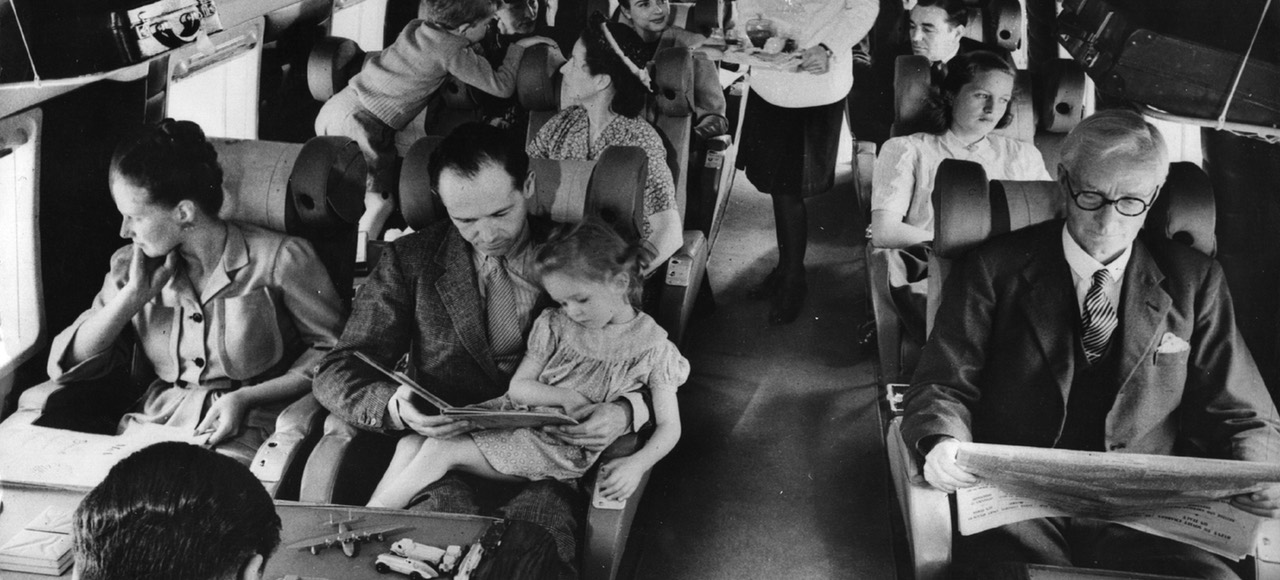
Interior of a BEA Vickers circa 1960 via Hulton Archive/Getty
With Operation Free Ride, the American government imagined a scenario in which planes would drop one-way tickets on Cuba to cities like Caracas and Mexico City. The idea was to stage a mass exodus and “create unrest and dissension amongst the Cuban people.” Interestingly, the planning documents explicitly state that no tickets to the United States would be dropped.
Coordinate real terror attacks on Miami and Washington
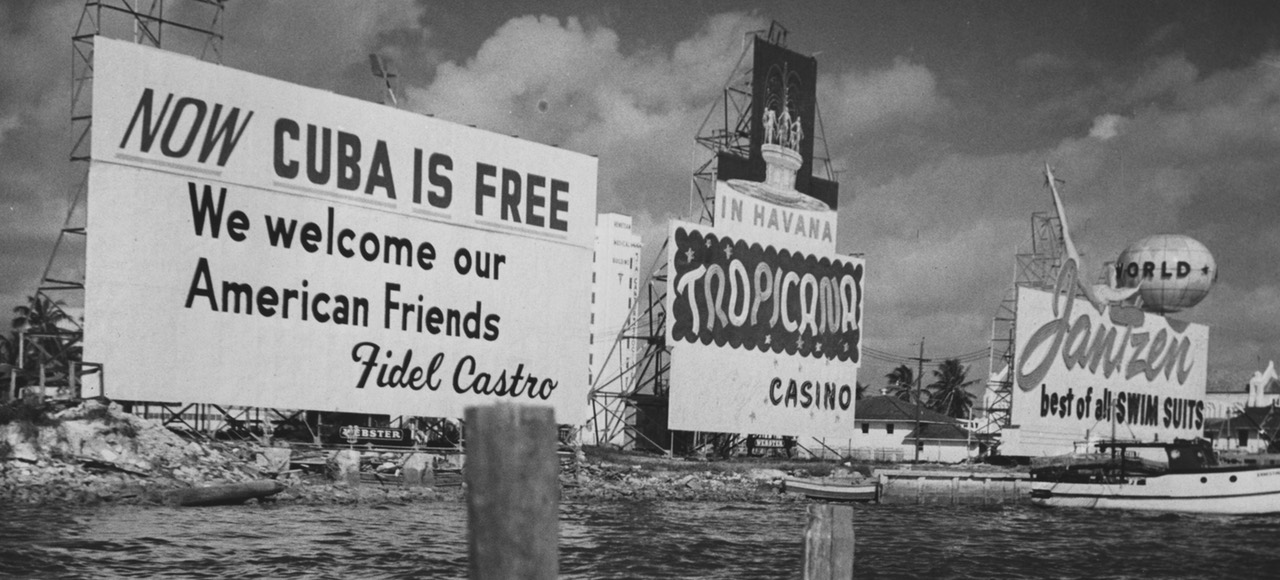
Advertisement on the Miami waterfront after Castro came to power via Getty
Shockingly, one idea that was floated involved staging terror attacks on U.S. soil. US officials actually proposed that Americans could start a campaign of terror to frame Cubans, complete with exploding bombs and attacks on refugees in American streets.
“We could develop a Communist Cuban terror campaign in the Miami area, in other Florida cities and even in Washington,” one document from 1962 reads. “The terror campaign could be pointed at Cuban refugees seeking haven in the United States.”
The term “pointed,” in this case, means that Cuban refugees would be targeted with violence. Violence made to look like it was the act of radical Cuban terrorists loyal to the Castro regime.
“We could sink a boatload of Cubans enroute to Florida (real or simulated),” the document continued. “We could foster attempts on lives of Cuban refugees in the United States even to the extent of wounding in instances to be widely publicised. Exploding a few plastic bombs in carefully chosen spots, the arrest of Cuban agents and the release of prepared documents substantiating Cuban involvement also would be helpful in projecting the idea of an irresponsible government.”
Use the American space program as a propaganda weapon
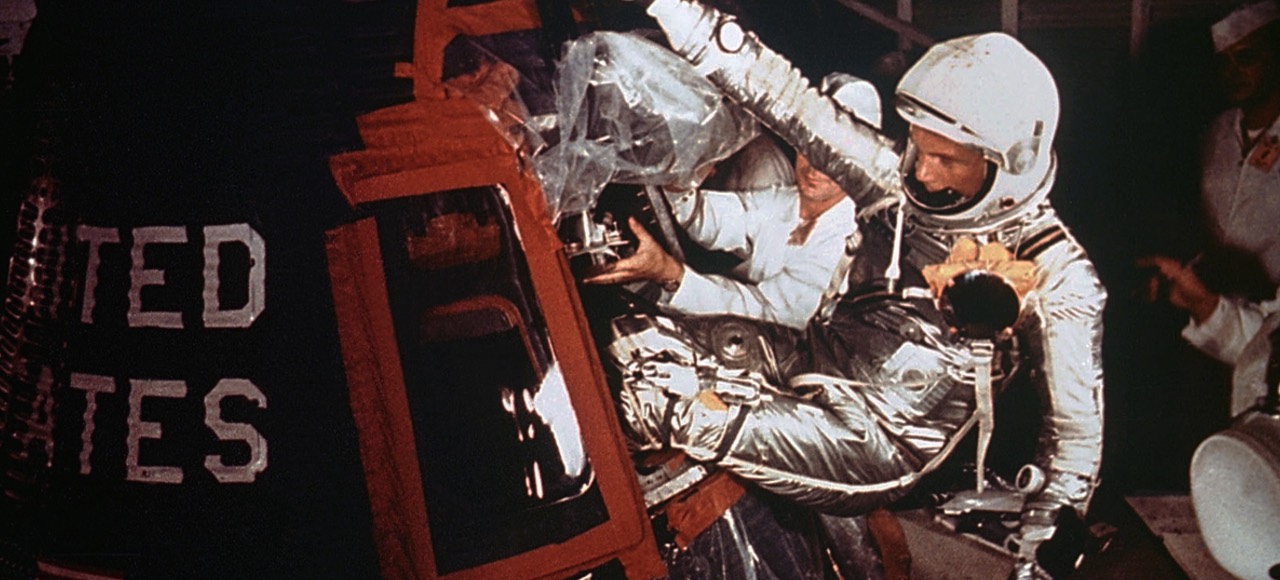
John Glenn in 1962 via Getty
The start of the US space program was rocky, to say the least. The first attempt by Americans to put a satellite into space didn’t go very well. The Americans were hoping to answer the Soviets and their successes but any time the Americans tried something in space, there wasn’t much confidence that it would work. So the military came up with two ideas aimed at Cuba that would utilise any failures to their advantage.
The first was called Operation Cover-Up (a little on the nose, no?), which was to convince Cuban officials that the US space program is a cover for something else. A cover for what? Even US military strategists didn’t care about thinking that far ahead. They just wanted to stir the pot and let the Cubans believe the worst. The second idea was called Operation Dirty Trick. If elements of the space program failed, such as the upcoming orbit of John Glenn, then the Americans would make it look like it was the fault of the Cubans.
“The objective is to provide irrevocable proof that, should the MERCURY manned orbit flight fail, the fault lies with the Communists et al Cuba,” one document explained. “This is to be accomplished by manufacturing various pieces of evidence which would prove electronic interference on the part of the Cubans.”
Destroy confidence in Soviet oil coming to Cuba

Russian freighter outside Havana via Getty
The goal of Operation Full-Up was to destroy confidence in fuel being provided by the Soviets. After the Cuban Revolution established a socialist state in 1959, the Soviet Union began sending oil to Cuba. At first American oil refineries refused to refine this oil, but that didn’t last long. Castro simply took over the oil refineries. So the Americans’ idea was to make Cubans believe that the oil coming into the country was somehow defective.
“This is to be accomplished by introducing a known biological agent into jet fuel storage facilities,” one document said. “This agent flourishes in jet fuel and grows until it consumes all the space inside the tank.”
Fake an attack on Guantanamo Bay
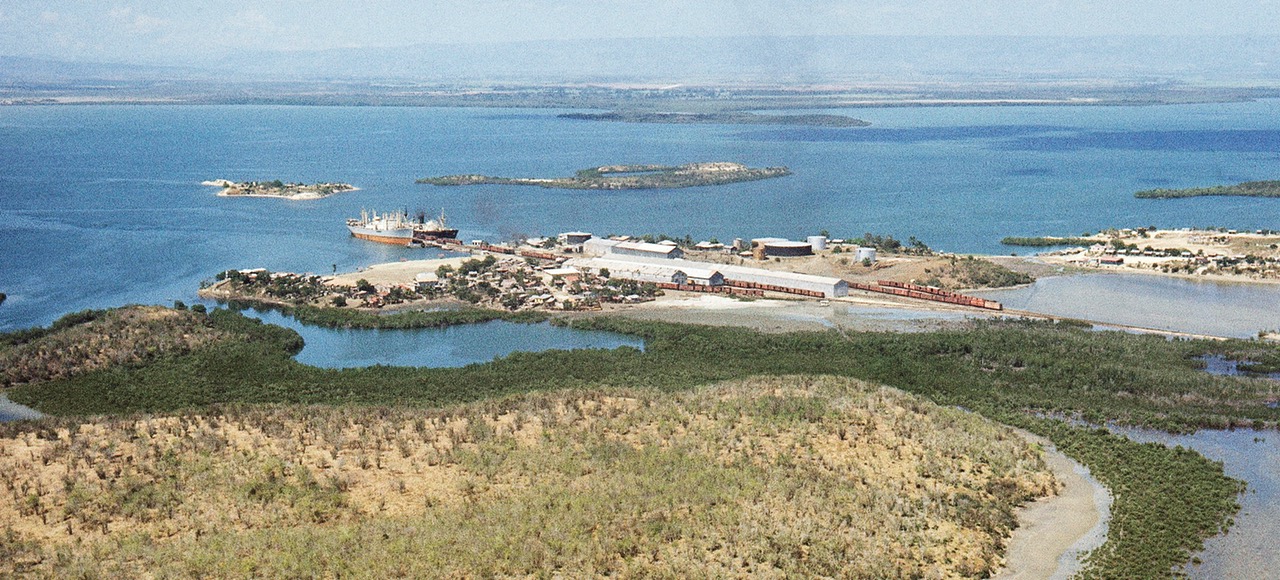
Guantanamo Bay in 1964 via AP
With Operation Bingo, US planners conceived of an idea to fake an attack on American soldiers at Gitmo as a pretence for war.
“The objective is to create an incident which has the appearance of an attack on U.S. facilities (GMO) in Cuba, thus providing the excuse for use of U.S. military might to overthrow the current government of Cuba,” a top secret document reads.
The plan was to use simulated war sounds that would sound like an actual fire-fight. This simulated attack would then be heard at Gitmo and understood by the majority of men stationed there as a real attack.
“This would, with proper preparation, be followed by a counterattack and with adequate planning the base at G’Mo could disgorge military force in sufficient number to sustain itself until other forces, which has been previously alerted, could attack in other areas.”
It was believed that such an attack could “overthrow the Cuban Government in a matter of hours, providing the plan is implemented within the next six months.” Since this document was written in March of 1962, that estimate of things being untenable after six months was pretty damn accurate. The Soviet Union would soon be sending nuclear missiles to Cuba, culminating in the Missile Crisis of October 1962.
Cause car and plane crashes in Cuba
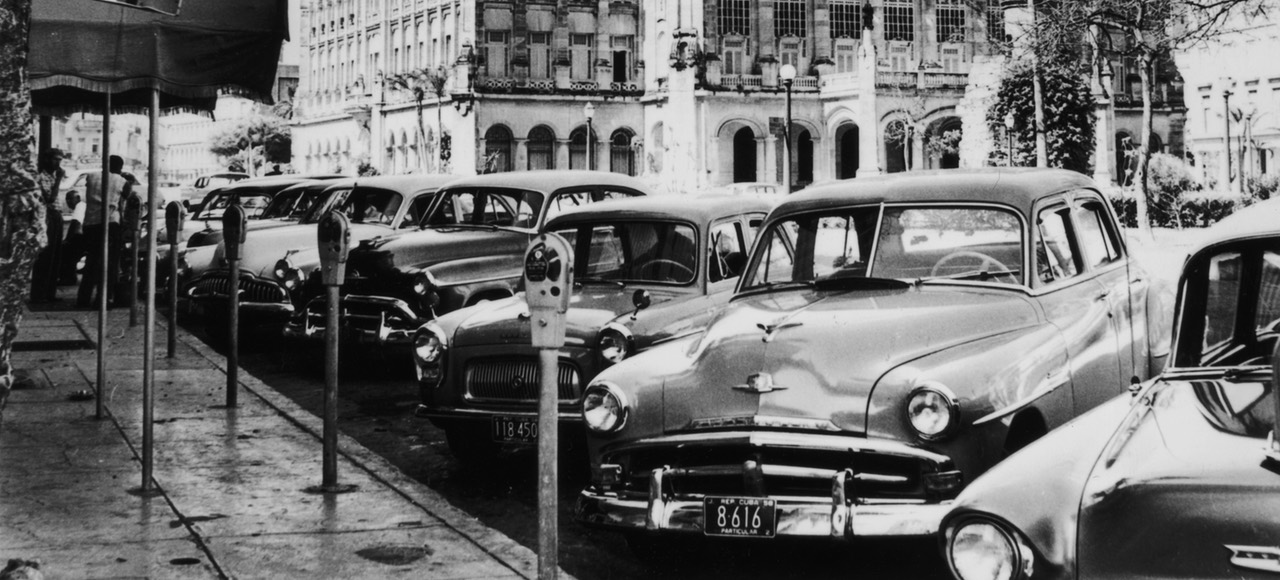
American cars in Havana in 1958 via Getty
Another idea that American planners had was to sabotage Cuban boats, cars, and planes so people would lose faith in them. Called Operation Break-Up, the idea was to “clandestinely introduce corrosive materials to cause aircraft, vehicle or boat accidents.”
Terrorise Cubans with a barrage of sonic booms
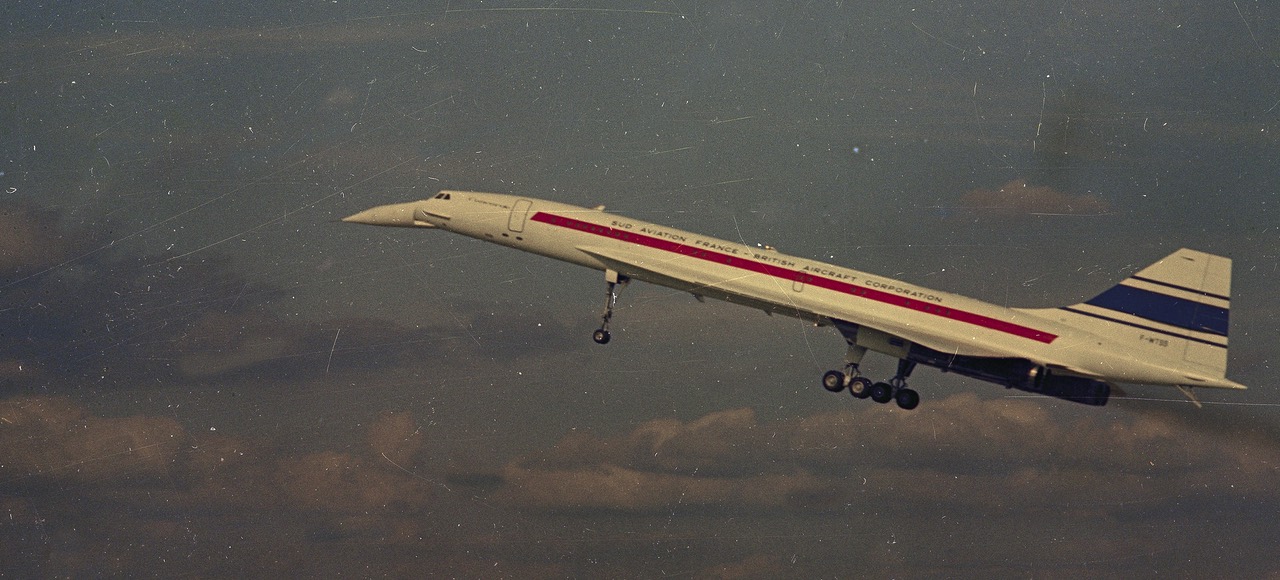
Concorde supersonic plane in 1969 via AP
The goal of what planners called Operation Invisible Bomb was to pummel Cuba with sonic booms in order to create confusion and damage. At first, Cubans would no doubt believe that they were under attack by isolated bombings. But over time, the shriek of the sonic boom would simply become an overwhelming presence of sustained terror.
“The ‘sonic-boom’ can be employed in several different ways such as an individual boom at selected spots or a continuous boom and performed at either high or low altitude,” one document explained. “It will cause not only apprehension but varying degrees of malicious damage as well, i.e. break all the windows on a street in Havana.”
The best part of the plan, as the government saw it? It was “relatively safe” while leaving “no tangible evidence” that it was conducted by the Americans. “It can be planned and executed with a minimum of effort and expense.”
Make coloured rain fall over Cuba
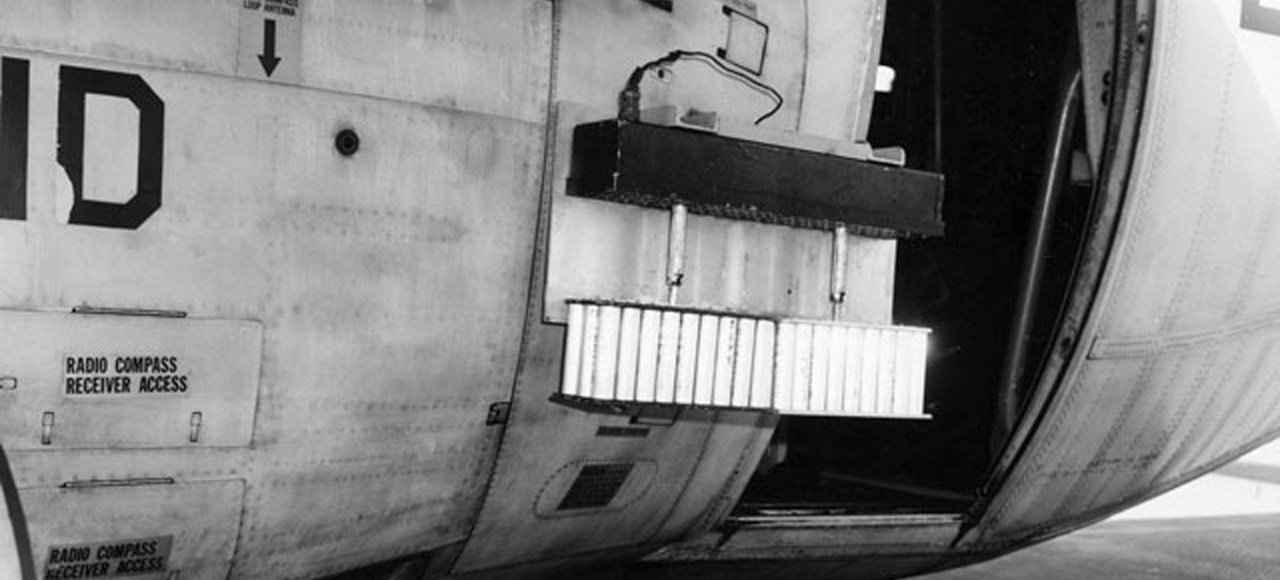
Cloud seeding unit flown over Vietnam via USAF
Much like the cloud seeding missions that were actually conducted years later in Vietnam , Operation Raindrop included a plan for weather control over Cuba.
The US wanted to “seed clouds off Cuba which would produce heavy rains during cane harvesting season.” The author of the paper explained that he was told that “the state of the art will permit colouring the rain (red/green).”
Hijack Cuban radio and TV with anti-communist messages
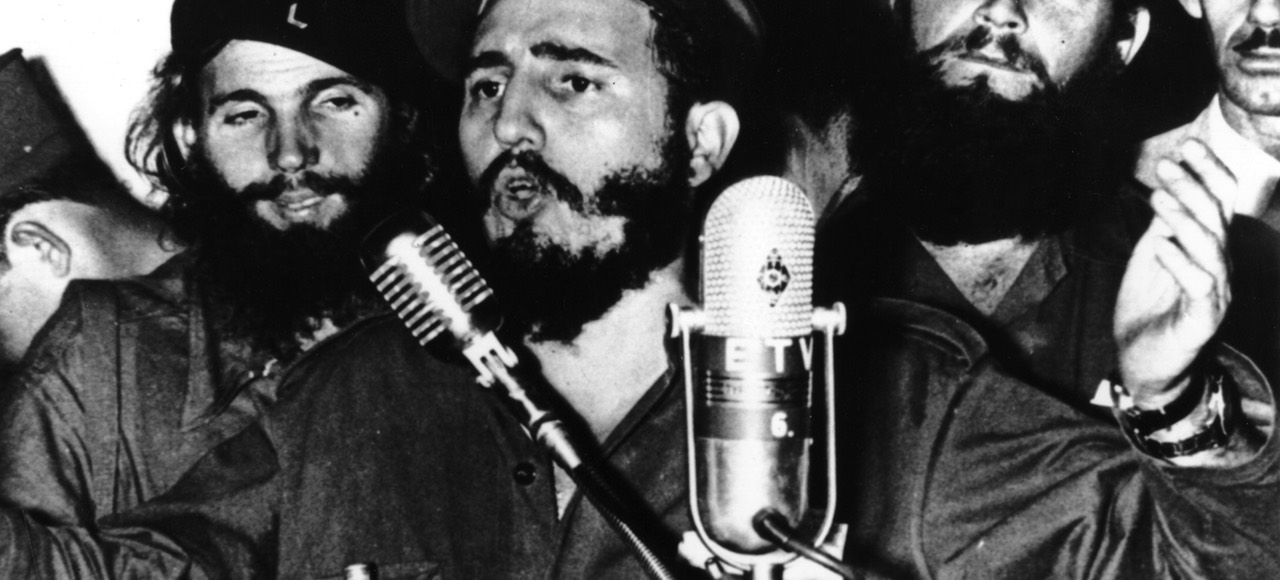
Fidel Castro in 1959 via Getty
The idea behind Operation True Blue was to disrupt Cuban radio and TV broadcasts with anti-Castro propaganda. Their ideas for messages that could be broadcast are actually kind of amusing, if only because they’re so damn straightforward and earnest:
“Cuba Si, Russia, No.
Communism exploits the masses.
Communism is ruthless totalitarianism
Castro and henchmen: feast off the land while we are rationed.
Castro and his reign of terror.
Castro is a lunatic and should be put away.
Castro is the cause of all our troubles.
Rise up against the pig Castro, etc. etc.
“If approved this operation could become a continuous project, perhaps under control of USIA,” the planning document said. The USIA was the United States Information Agency, the country’s foreign propaganda-production arm.
Today, though the USIA is no longer in existence, it may not surprise you to learn that the United States creates fake social media accounts to influence conversations online. Or maybe it’s no surprise. After learning about false flag operations conceived by the US government it’s hard to be surprised by anything these days.
Distract and harass Cuban pilots by calling them names
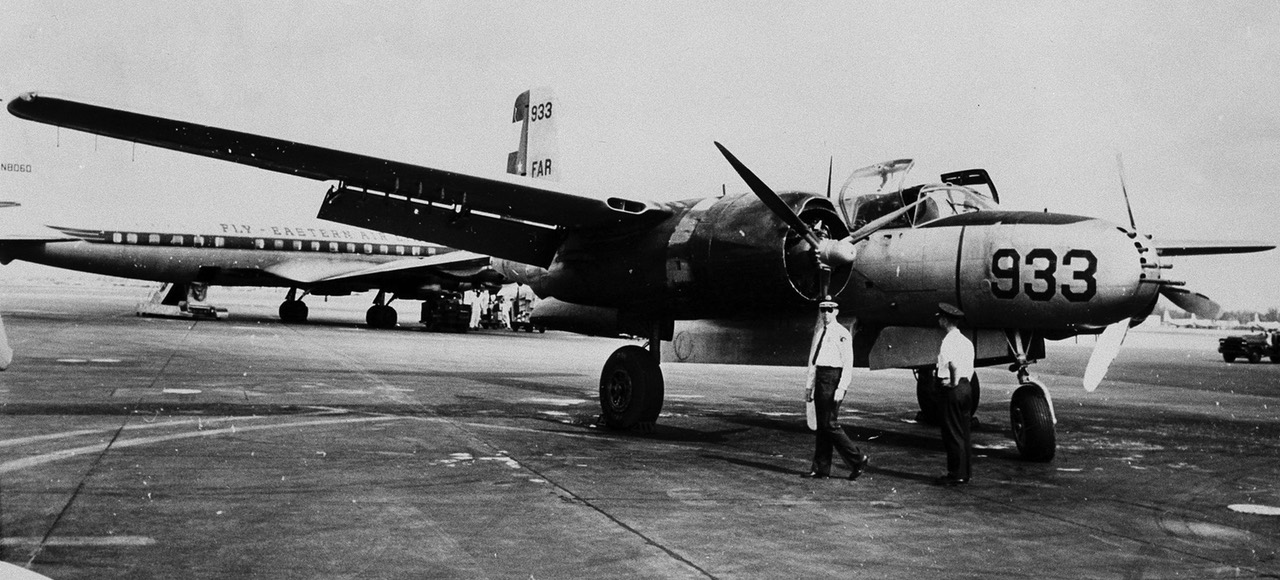
Cuban Air Force B-26 lands in Miami seeking asylum in 1961, after taking part in air attacks on airports at Havana and Santiago via AP
Operation No Love Lost was perhaps the most juvenile of the bunch. The goal? Harass Cuban pilots through radio communications by just calling them names. And here you thought state-sanctioned trolling was new.
“Argument could go, ‘I’ll get you you Red son-of-a-gun,’ and call by name if appropriate,” one document read. “Would be real trouble for Castro pilots in actual weather conditions.”
Sabotage Cuban communications equipment
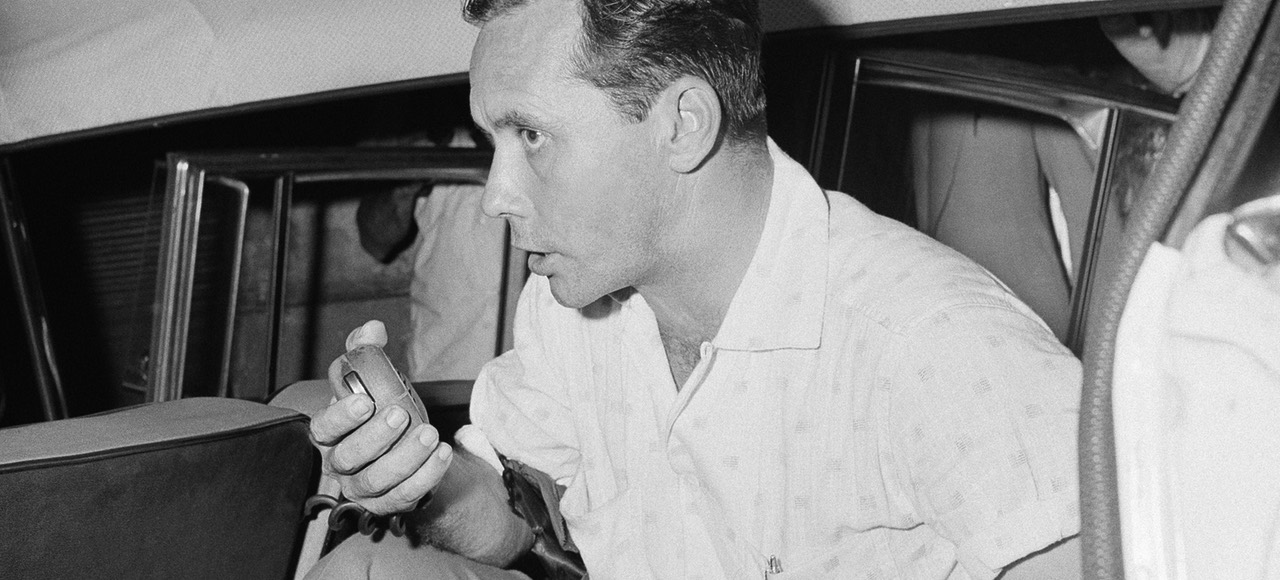
A “rebel leader” uses a radio in a commandeered taxi in 1959 via AP
The idea of Operation Smasher was to introduce faulty vacuum tubes into Cuba so that everything from military communications to home radios would be disrupted. The plan was to pay off employees of various suppliers and seed the country with vacuum tubes “modified in such a manner as to cause a short circuit.”
When compared with the other ideas on this list, Operation Smasher was pretty tame. But it still had the potential to do a fair amount of damage to the country’s communications infrastructure.
The Fallout
This list is far from comprehensive, but it does give a taste of just how badly the United States wanted to see Castro overthrown. Why were so few of these operations carried out, as far as we know? Because the US was hyper-aware of looking bad to the rest of the world. As one CIA memo from 1962 explained: “[…] the reactions to a determined US effort to overthrow Castro would range from lack of sympathy or support to expression and acts of opposition.”
After the Bay of Pigs fiasco in 1961 which involved Cuban exiles trained by the CIA in Guatemala, US officials figured that the only answer was to sabotage the Castro regime through tactics that couldn’t be traced back to the American military and intelligence communities.
A memo from Brigadier General William H. Craig (excerpted below) dated March 13, 1962 made the objectives of the Cuba Project abundantly clear:
This plan, incorporating projects selected from the attached suggestions, or from other sources, should be developed to focus all efforts on a specific ultimate objective which would provide adequate justification for US military intervention. Such a plan would enable a logical build-up of incidents to be combined with other seemingly unrelated events to camouflage the ultimate objective and create the necessary impression of Cuban rashness and irresponsibility on a large scale, directed at other countries as well as the United States.
[…]
The desired resultant from the execution of this plan would be to place the United States in the apparent position of suffering defensible grievances from a rash and irresponsible government of Cuba and to develop an international image of a Cuban threat to peace in the Western Hemisphere.
As James Bamford explains in his 2012 book Body of Secrets, many of these proposals were nothing short of treason. And these weren’t low level bureaucrats coming up with these ideas. They were top level military and intelligence advisors.
But there weren’t repercussions for the people who concocted these schemes. Instead, many were promoted. Where did Brigadier General William H. Craig wind up? He was promoted to General and went to work as the head of the Army Security Agency — the former military arm of the NSA.
